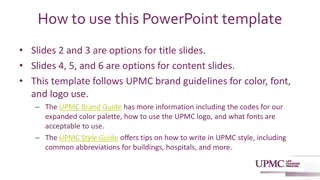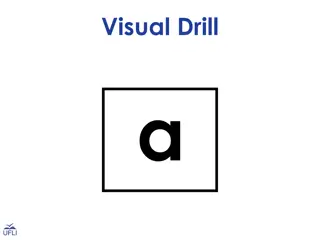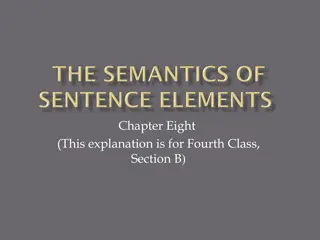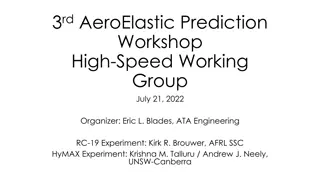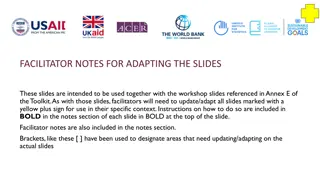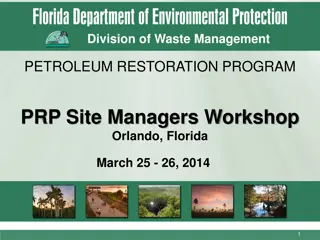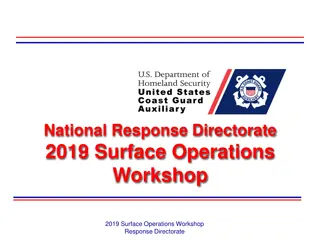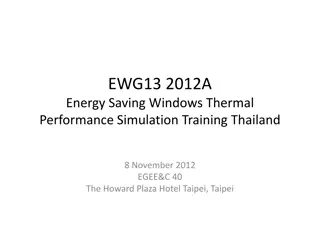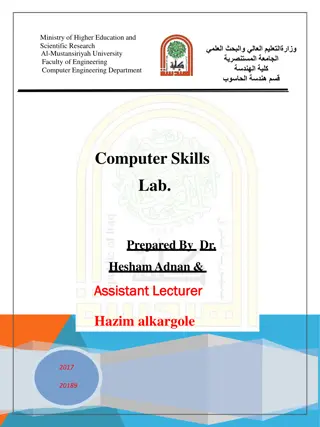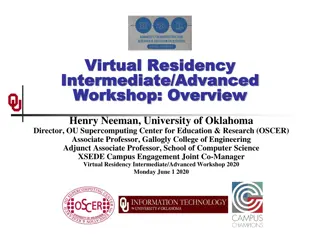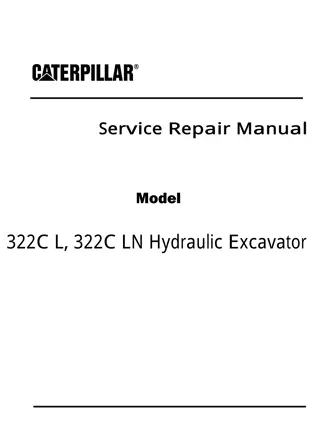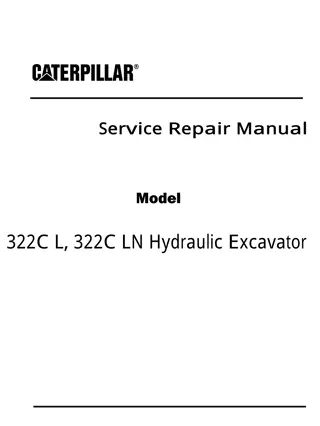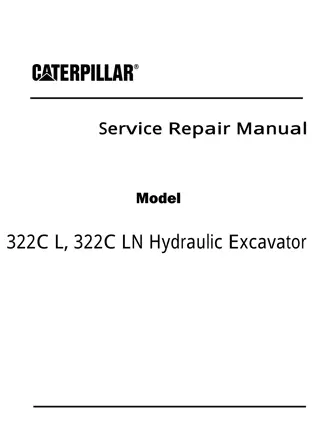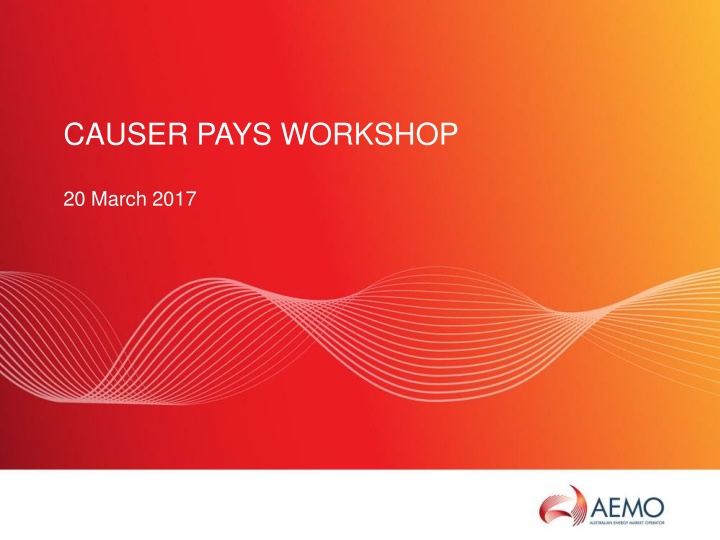
Causer Pays Workshop - Review and Consultation Details
Explore the details of the Causer Pays Workshop held on 20th March 2017, including objectives, agenda, background, and key factors discussed. Learn about the driver for the review and the consultation timing for submissions and reports.
Download Presentation

Please find below an Image/Link to download the presentation.
The content on the website is provided AS IS for your information and personal use only. It may not be sold, licensed, or shared on other websites without obtaining consent from the author. If you encounter any issues during the download, it is possible that the publisher has removed the file from their server.
You are allowed to download the files provided on this website for personal or commercial use, subject to the condition that they are used lawfully. All files are the property of their respective owners.
The content on the website is provided AS IS for your information and personal use only. It may not be sold, licensed, or shared on other websites without obtaining consent from the author.
E N D
Presentation Transcript
CAUSER PAYS WORKSHOP 20 March 2017 SLIDE 1
OBJECTIVES OF THE WORKSHOP Discuss with stakeholders the range of issues raised in first round submissions: o Specific issues AEMO sought feedback on o Other matters identified Discuss AEMO s proposed approach to addressing matters not directly related to causer pays Discuss how the review fits into broader market considerations SLIDE 2
AGENDA 1. Welcome/confirm agenda 2. Background to consultation 3. Submissions to AEMO questions 4. Other matters raised 5. Broader framework matters 6. Meeting close SLIDE 3
BACKGROUND TO CONSULTATION SLIDE 4
DRIVER FOR THE REVIEW During October/November 2015, market outcomes gave rise to very high regulation FCAS costs, particularly with respect to SA local requirements In January 2016, stakeholders supported a review of the Causer Pays Procedure (CPP) to ensure it remained appropriate and effective Due to a settlement dispute being raised with respect to regulation FCAS recovery, the review was suspended the dispute was finalised in October 2016 SLIDE 5
FACTORS DURING ASYNCHRONOUS OPERATION As an outcome of the settlement dispute, the Dispute Resolution Panel required AEMO to amend the CPP to include the calculation of factors to be used during periods of asynchronous operation o The consultation was limited in scope due to the nature and timing of the requirement, however the current CPP review provides an opportunity to revisit any broader and longer-term issues. AEMO finalised a consultation on 3 March 2017, with an amended CPP being published o Details can be found at: http://www.aemo.com.au/Stakeholder- Consultation/Consultations/Causer-Pays-Procedure- Consultation---Factors-For-Asynchronous-Operation SLIDE 6
CONSULTATION TIMING Process stage Indicative date Closing date for submissions in response to this Notice and Issues Paper 24/02/2017 Publication of Draft Report and Determination 07/04/2017 Closing date for submissions in response to the Draft Report 19/05/2017 Publication of Final Report and Determination 30/06/2017 SLIDE 7
SUBMISSIONS TO AEMO QUESTIONS SLIDE 8
ISSUE 1: LOCAL REQUIREMENTS Options considered: 1. Status quo global factors calculated for participants, and scaled into regional factors 2. Separate factors calculated for participants for all region combinations 3. Separate factors calculated for participants in each NEM region, aggregated as required. Support for AEMO s proposal that factors should only be aggregated within a local requirement, however mixed support for option 2 and 3 SLIDE 9
ISSUE 2: PORTFOLIO NETTING Options considered: 1. Status quo performance netted across portfolio 2. No performance netting across portfolio 3. Partial performance netting across portfolio Mixed support for option 1 and 2, and no support for option 3 SLIDE 10
ISSUE 3: SAMPLE PERIOD NETTING Options considered: 1. Status quo performance netted across sample period 2. No performance netting across the sample period General support for option 1 SLIDE 11
ISSUE 4: SIZE AND TIMING OF SAMPLE PERIOD Options considered: 1. Status quo 28 day sample period and application period 2. Real time factors 3. Seven day sample period and application period Support for all three options, however acknowledging that real time factors would be a longer term option SLIDE 12
ISSUE 5: TREATMENT OF NON-METERED MARKET GENERATION Support for non-metered market generation being included as part of recovery of the residual A methodology for apportioning between non-metered market generation and non-metered market load has not been developed yet, and would be considered during development of a rule change SLIDE 13
ISSUE 6: ZERO OR POSITIVE FACTORS Support for AEMO s proposal to recover through the residual when all factors are zero or positive AEMO intends to explicitly include this in the CPP SLIDE 14
ISSUE 7: REGISTRATION CHANGES Support for AEMO s proposal for changes in registration to be reflected as a NULL factor (rather than a zero factor) SLIDE 15
ISSUE 8: UNRELIABLE DATA Support for AEMO s proposal to continue to disregard data deemed to have been of bad quality, and to include a minimum threshold in the CPP of 20% for a sample period to be considered viable SLIDE 16
ISSUE 9: PUBLICATION OF DATA Support for AEMO to continue to publish the raw input data, and for additional data at the 5-minute level to be produced AEMO will explore other alternatives to the current mechanisms of publishing data SLIDE 17
ISSUE 10: CAUSER PAYS DOCUMENTATION Support for AEMO to consolidate and clean up the CPP This will be done as part of publishing a draft CPP along with the draft determination SLIDE 18
OTHER MATTERS RAISED SLIDE 19
SUITABILITY OF INPUT DATA Participants raised concerns with respect to the suitability of data being used as the basis of determining performance, including: o Delays in data communications o AGC using discrete pulses o Initial MW and not matching previous DI s target o Difficult for participants to estimate FI in real time to understand exposure SLIDE 20
DISPATCH OF SEMI-SCHEDULED GENERATORS Participants raised concerns about the material impact that semi-scheduled dispatch targets were having on causer pays performance AEMO understands that some improvements have been made as part of the ECM guidelines (in particular with respect to local limits), however there may still be some limitations with respect to distribution network limits AEMO is exploring these issues, however sees the issues as being separate to the CPP review SLIDE 21
RELIABILITY SETTINGS Participants raised concerns about the level of market price cap (MPC) and cumulative price threshold (CPT) which is applied to ancillary services markets AEMO notes that the MPC and CPT form part of the reliability settings, and are reviewed by the Reliability Panel SLIDE 22
METERED BELOW ZERO Participants raised an issue related to periods when a generator is not exporting and has on-site consumption (i.e. metered energy is effectively negative) AEMO is investigating this issue, but would be interested in hearing if there is any difference in how wind farms are treated compared to other types of generation SLIDE 23
FREQUENCY DEAD-BAND Participants noted the behaviour of system frequency is significantly different when compared to ten years ago, and suggested this is likely the result of generators changing their frequency control settings (such as dead- band) As a first step, AEMO is seeking to understand the impact that the changed frequency behaviour is having on the power system, however sees this issue as being separate to the CPP review SLIDE 24
COMBINED METERED UNIT FACTOR A suggestion was raised as an alternative to calculating factors, which involves a two stage process: 1. All units with SCADA combined to find total factor for metered units 2. Total metered unit factor then divided into relevant portfolios This approach would involve a different treatment of the residual, and AEMO is investigating the merits of this approach SLIDE 25
WIND COALITION CONSULTANT REPORT AEMO acknowledges the consultant report prepared for the Wind Coalition, and the analysis conducted on: o Power system frequency distribution o Dispatch interval profiles o SCADA time lag o Dispatch interval forecast o Aggregation of factors SLIDE 26
BARRIERS TO ENTRY AND COMPLEXITY A participant raised concerns with the current causer pays arrangements: o Potential to create a barrier to entry for new participants o Increasing complexity, particularly with respect to price signals AEMO agrees that simplicity should be a guiding principle, however notes that there will generally be a trade-off between simplicity and the efficiency of cost recovery SLIDE 27
BROADER FRAMEWORK MATTERS SLIDE 28
MASS CONSULTATION AEMO is also conducting a consultation on the Market Ancillary Services Specification (MASS), in particular to consider amendments to support the introduction of ancillary services unbundling Further information is available at: http://www.aemo.com.au/Stakeholder- Consultation/Consultations/Amendment-Of-The-Market- Ancillary-Service-Specification SLIDE 29
FUTURE POWER SYSTEM SECURITY AEMO s Future Power System Security (FPSS) program is looking at potential solutions which would likely impact the ancillary services markets Options being considered may entail more dynamic requirements for regulation, which could result in the current causer pays framework being less suitable The reports and analysis have been collated at the following page: http://www.aemo.com.au/Electricity/National-Electricity- Market-NEM/Security-and-reliability/FPSSP-Reports- and-Analysis SLIDE 30
MEETING CLOSE SLIDE 31
NEXT STEPS Further engagement with participants one-on-one with respect to particular concerns and suggestions Publication of draft determination in April, along with a amended version of the CPP SLIDE 32
ANY FURTHER QUESTIONS SLIDE 33





